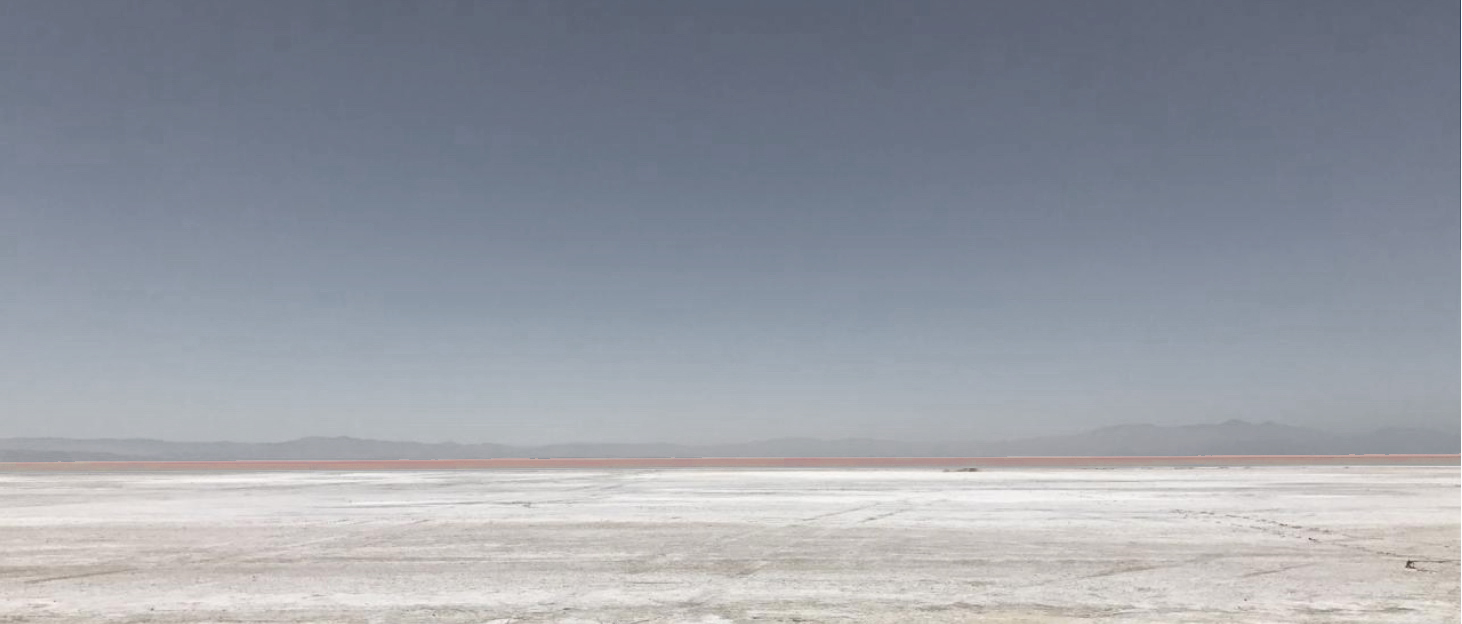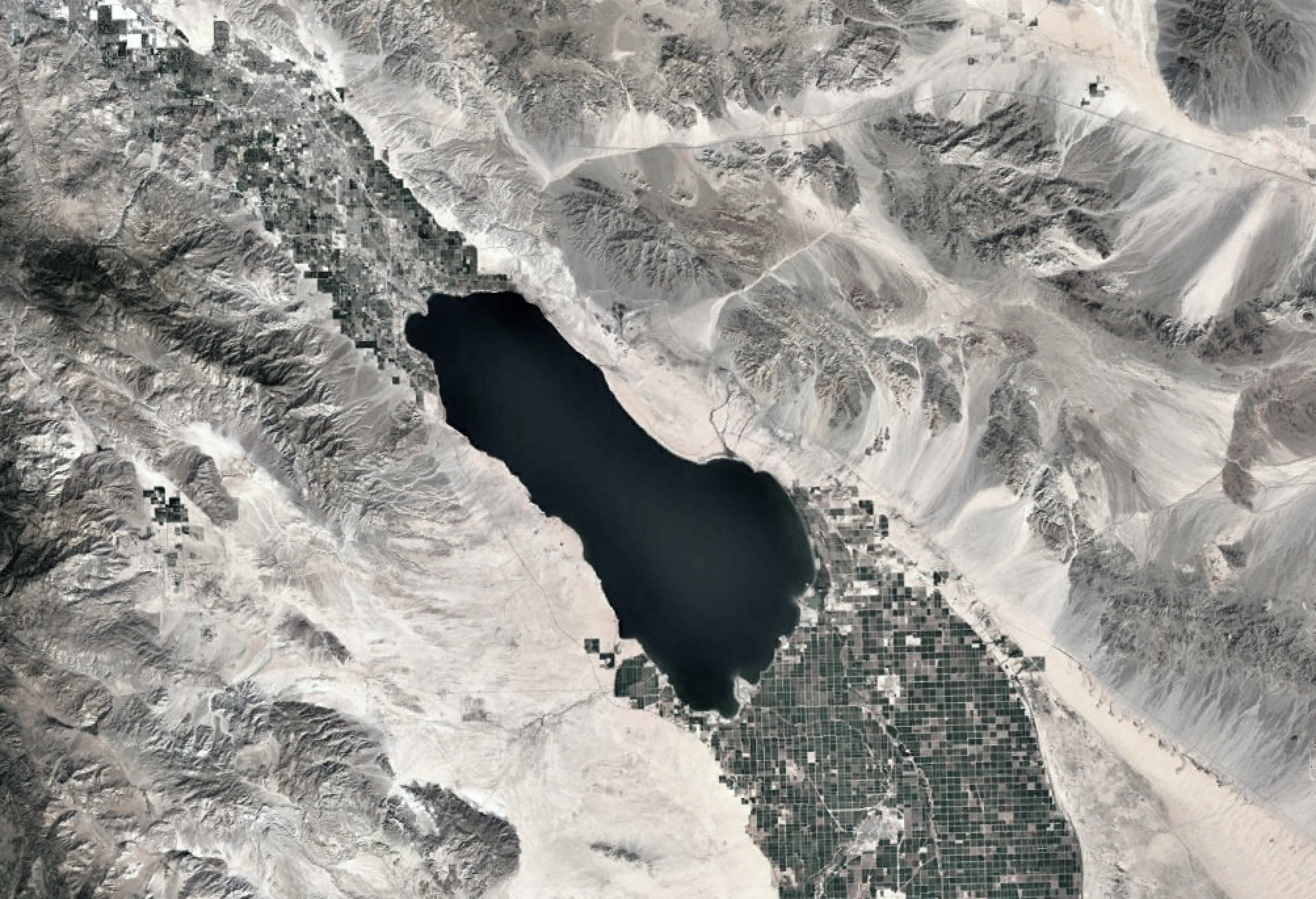

| The Salton Sea is a saline, endorheic inland lake in Southern California, USA. It was created in 1905 when heavy rain flooded the Colorado River and water flowed into the sink basin that now holds the Salton Sea. It is located at an elevation of −69m (−226 feet) below sea level and the depth of the lake is 16m (52 feet) deep. Although the lake is a result of an accident caused by engineers, the basin has through millennia overflowed in a continuous cycle of death and rebirth. Each cycle of overflow is followed by a process of slow decline and elimination before returning the lake into a dry desert basin. Deposits of mineral salts in the silt has over time increased the salinity of the water and it is currently measuring 56g/l, which is a higher level than the Pacific Ocean. The water level in the lake is sinking due to a prolonged drought that has forced an end to the water supplied from the Alamo canal, that diverts water from the Colorado River to farmland in Imperial Valley, causing the dying lake to eventually dry out. Water flowing into the Salton Sea from agricultural runoff and drainage systems containing pesticides and fertilisers is polluting the water, and eutrophication caused by toxic algal bloom during the summer months is killing the fish. The stench of rotting fish filling the air is part of a repetitive, seasonal cycle, and adds to the sulphuric smell emitted from geothermal mud volcanoes in the area. The receding shoreline continues to expose the sea bed with its smell of rot and sewage. The lake is a macabre spectacle of death and decay. An eerie beauty of decay is also present in the landscape surrounding the lake, where abandoned structures from past decades when the place was a holiday destination stand empty and deserted in the dusty landscape. The reduction of the water levels due to evaporative loss will continue to increase the concentration of salt in the water, and this will lead to further reduction of the number of living organisms able to survive in the lake. The increasing salt concentration will also lead to a change of the colour of the lake. Over time, as the salt concentration increases, the water will gradually turn pink. The change in colour of the water is a natural phenomena caused by the red algae Dunaliella salina, that is able to survive the salinity of the water. The algae will make the colour of the water appear pink, and over time, as the lake continues to recede, it will culminate in hues of crimson, before drying out and vanishing completely. This study investigates the possibility of cleaning the polluted water that is entering the lake through the installation of a phytoremediation system. Aquatic phytoremediation systems, such as reed beds, uses plants to absorb toxins and nutrients in water. Reeds filter water through its root system where bacteria, fungi and algae digest waste water and sewage, and absorbs and binds toxins, including heavy metals. Reed bed systems could be constructed in the estuaries of the rivers entering the Salton Sea, allowing the water to flow through the reeds for absorption of toxins and fertilisers used in the agricultural industry. Installed at multiple locations, it would filter the water from the rivers, streams and channels in the catchment area before discharging clean water into the lake, thereby reducing the algal bloom and process of eutrophication. Concrete channels constructed to obtain fast and efficient drainage from agricultural fields could be replaced with reed beds, thus allowing both absorption of contaminants and groundwater replenishment. The containment of the water locally to maintain groundwater levels would be beneficial for the growing of crops as rising temperatures and less rainfall due to climate change will require more irrigation in the future. The American Common Reed (Phragmites australis ssp. americanus) grows in both fresh and saltwater and is native to California. Reeds provide habitat for wildlife and breeding ground for many aquatic birds. The Salton Sea has until recently been a major nesting, wintering, and feeding site for migratory birds making a stopover along the Pacific Flyway, but the avian fauna visiting the area is changing due to a lack of fish in the lake. The construction of a phytoremediation system of reed beds to clean the water in the catchment area from pollutants could bring some of the migrating birds back to the area, and help in mitigating the environmental disaster of the vanishing lake, before it finally ends as a pink sliver of water. |
__
research project, 2019
